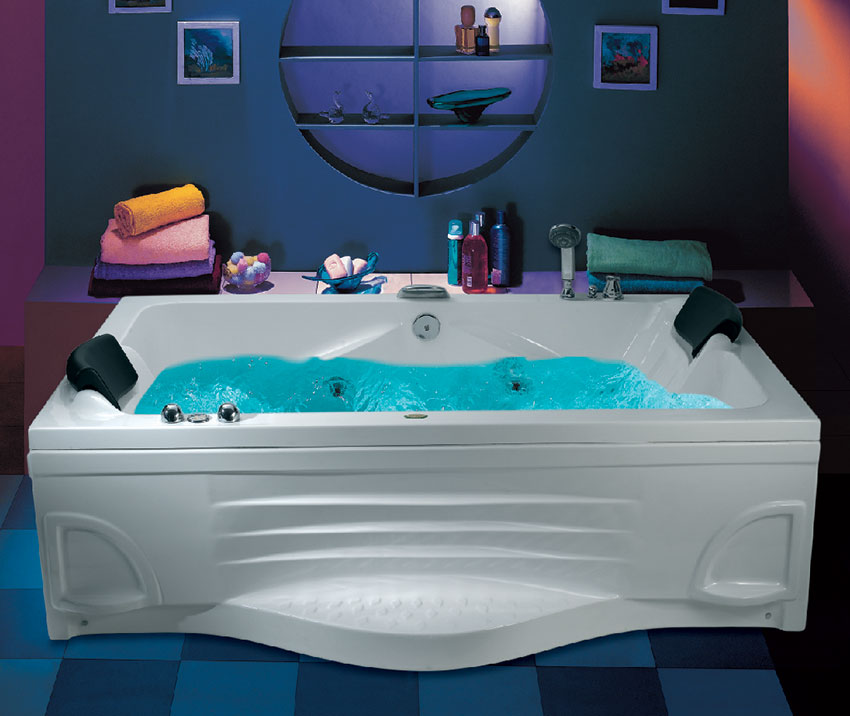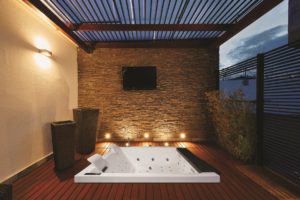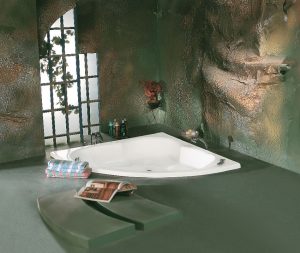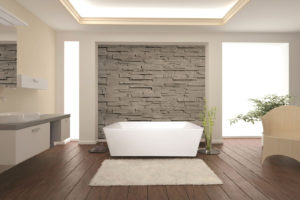When we want to remodel a bathroom or install a new tub, one of the biggest decisions is whether to go with a freestanding bathtub or a built-in tub. Both styles have their pros and cons in terms of design, installation, and functionality. This article will compare and contrast freestanding and built-in rectangular tubs to help homeowners understand the key differences and determine which is better suited for their space.
We’ll discuss what defines each tub type, the distinct pros and cons of each regarding aesthetics, ease of installation, cleaning and maintenance, costs, and more. We’ll also provide recommendations on bathroom designs and layouts that work best with freestanding versus built-in tubs. By the end, you’ll have a clear overview of both styles so you can make an informed decision for your next bathroom remodeling or new tub purchase.
Freestanding and Built-in Tubs
First, let’s clearly define what makes a freestanding tub versus a built-in tub:
Freestanding Bathtubs
A freestanding tub is not attached to any walls or surrounded by tile or other enclosure. It sits independently on the bathroom floor, with exposed exterior sides. Freestanding tubs have finished exteriors as they are meant to be a visible focal point in the space. The drain and pipes are concealed within the tub platform pedestal base.
Built-In Bathtubs
A built-in tub is enclosed on three sides by the surrounding bathroom walls and/or tile or other enclosure. The back wall of the tub fits flush against the wall studs. The drain and pipes are concealed behind the walls or beneath the floor. Built-in tubs have unfinished exteriors as they are not meant to be seen.
Key Pros of Freestanding Tubs
Now that we’ve defined the two styles, let’s look at some of the distinct advantages and disadvantages of each, starting with freestanding tubs:
Aesthetically Pleasing Focal Point
One of the biggest benefits of a freestanding tub is it serves as an aesthetically pleasing focal point in the bathroom. The exposed tub becomes a large decorative element that makes a statement. Available in a range of materials from enameled steel to stone resin to acrylic and in various shapes from rectangular to oval, freestanding tubs allow you to choose a style that matches your design vision. Placement of a freestanding tub is also flexible so you can put it in a spot that draws attention.
Easier Access for Cleaning
With exposed sides, freestanding tubs are easier to access and clean than built-in tubs. You can wipe down all surfaces without obstruction. If you prefer baths to showers for a relaxing soak, a freestanding tub will likely stay cleaner with regular use.
Flexible Placement in Bathroom
Freestanding tubs are not limited to any one spot in the bathroom. They can be placed virtually anywhere provided there is access to water lines and drainage. This allows greater flexibility in bathroom floor plan and layout options. You can place a freestanding tub in the center of the room as a bold accent piece or tucked into an alcove for more privacy.
Can Make Small Bathrooms Feel Larger
While they take up more visible floor space than built-in tubs, freestanding tubs can actually make a small bathroom feel larger and more open. The floor area around the tub remains clear, creating the illusion of more space. Built-in tubs, conversely, are confined to a specific enclosed spot.
Overall, the aesthetic appeal, ease of cleaning, and flexible placement of freestanding tubs make them a popular choice, especially in modern or contemporary-style bathrooms. However, there are some downsides to weigh as well.
Potential Cons of Freestanding Tubs
Along with the advantages above, consider these potential disadvantages when choosing a freestanding tub:
Require More Floor Space
Due to exposed sides, freestanding tubs have larger footprints and take up more overall floor space than built-in versions. This may limit placement options in smaller bathrooms. Ensure your floor plan can accommodate a freestanding tub’s larger dimensions.
Exposed Pipes May Disrupt Aesthetic
The drain and pipework needed beneath and around freestanding tubs remains exposed. Some homeowners feel visible pipes look messy or take away from the aesthetics. Make sure your plumbing layout can accommodate tidy pipe runs if choosing this style.
Difficult to Access Some Areas
The open areas around a freestanding tub make cleaning the tub itself easier. However, the spaces behind and beneath the tub can be hard to reach for cleaning if not properly enclosed. This allows mildew and soap scum to build up out of sight.
Next, we’ll look at the pros and cons of choosing a built-in tub instead.
Key Pros of Built-In Tubs
Built-in tubs also offer certain advantages, including:
Take Up Less Floor Space
With three enclosed sides, built-in tubs have smaller footprints and leave more open floor space surrounding them. This can be ideal for smaller bathrooms where square footage is limited. The alcove design means less visible floor area is occupied.
Hide Plumbing & Imperfections
All drain pipes and plumbing for built-in tubs are concealed behind walls or beneath the floor. This keeps the technical elements out of sight for a seamless aesthetic. Tile or other enclosure materials also cover any tub imperfections.
Specifically Sized for Precise Fit
Built-in tubs are custom-sized for an exact fit into a designated alcove or space. They’ll seamlessly fill the precise area in your existing bathroom layout with minimal gaps or awkward spacing. Freestanding tubs offer more size variations that may not fit your specific area as perfectly.
Potential Cons of Built-In Tubs
Of course, built-in tubs also have a few disadvantages to keep in mind:
Limited Placement Options
Since built-in tubs must fit into a fixed space with existing plumbing lines, you cannot reposition them elsewhere in the bathroom. Make sure the allocated built-in spot works well with the room’s layout and flow before installing.
Harder to Access for Cleaning
With three enclosed sides, built-in tubs can be challenging to clean. Reaching the back walls or working around the confined space takes more effort than cleaning a freestanding tub. Regular scrubbing is essential to avoid mildew buildup.
Provide Less Visual Impact
Built-in tubs don’t provide the same striking visual impact that makes freestanding tubs stand out. They blend into the background rather than commanding attention. If you want a tub to be a decorative focal point, built-in styles fall short.
Installation Considerations: Freestanding vs. Built-In Tubs
Installation is another key difference between freestanding and built-in tubs that impacts the time, cost, and complexity of your bathroom remodel. Keep these factors in mind regarding installation:
Freestanding Tub Installation
Installing a freestanding tub is fairly straightforward:
- Position the tub in the desired location with access to water and drainage lines.
- Level the tub and ensure it sits evenly on the floor.
- Connect the drain and water lines. Conceal pipes as much as possible beneath tub or behind nearby walls.
- No construction or custom fitting required. The tub remains unattached from surrounding walls.
Built-In Tub Installation
Built-in tubs involve a more complex installation process:
- The plumbing must already be roughed into the exact spot where the tub will be enclosed.
- Walls and tub decking must be framed, fitted, and leveled precisely to tub dimensions.
- Tub must be custom ordered to fit alcove space or cut to size on site for a snug fit.
- Tub gets fully enclosed on three sides once installed into framing.
- Wall finish materials go up around the tub enclosure.
In most cases, installing a freestanding tub will be faster, simpler, and involve lower cost than a built-in tub installation.
Bathroom Design Considerations
The layout and size of your bathroom is another big factor in choosing between tub styles. Here are tips on which designs suit freestanding or built-in tubs best:
Freestanding Tubs Work Well With:
- Large, spacious bathrooms – Provide enough floor space for tub footprint
- Open floor plans – Allow tub to be focal point amid open sight lines
- Contemporary design – Match clean, modern aesthetic
- Bathrooms lacking structure – Tub defines space with minimal existing architecture
- Flexible layouts – Easily change tub location if remodeling again
Built-In Tubs Work Well With:
- Smaller bathrooms with space constraints
- Existing alcoves or set tub areas
- Traditional bathrooms with defined structure
- Limited remodel budget – Use existing plumbing lines
- Long narrow spaces – Optimizes smaller footprint
- Half baths – Provides tub option even in tight quarters
The Takeaway
There are tradeoffs to weigh when choosing between freestanding and built-in tubs. Freestanding tubs make a bold style statement but take up more visible space. Built-in tubs maximize floor space but lack design impact. Freestanding tubs offer easier cleaning access and flexible placement; built-ins allow utilizing existing plumbing lines and alcoves.
Consider your bathroom’s current layout, dimensions, plumbing, and style when deciding between the two tub types. Also think about your budget, the complexity of installation you can handle, and whether you want the tub to be a focal point or blend seamlessly into the space. This will help determine if a freestanding or built-in rectangular tub is the right selection for your upcoming bathroom remodeling project.
Woven Gold India is one of the best sellers for premium rectangular bathtubs in India. With over decades of experience as a leading bathroom solutions provider, Woven Gold India offers an extensive selection of freestanding and built-in rectangular tubs crafted from high-quality materials like acrylic, stone resin, enameled steel, and more. Our collection includes minimalist contemporary designs as well as more ornate classic styles suitable for various bathroom aesthetics. All Woven Gold India tubs are manufactured under stringent quality standards and meticulously inspected to ensure durable, long-lasting construction. They provide complete customer support for selection, installation, and after-sales service.
If you’re looking to install a new rectangular bathtub in your bathroom remodeling project, Woven Gold India is a trusted choice with an exceptional reputation for stylish, innovative products made to the highest quality benchmarks. Their expertise in both freestanding and built-in tubs makes them a great one-stop resource for your new tub.




